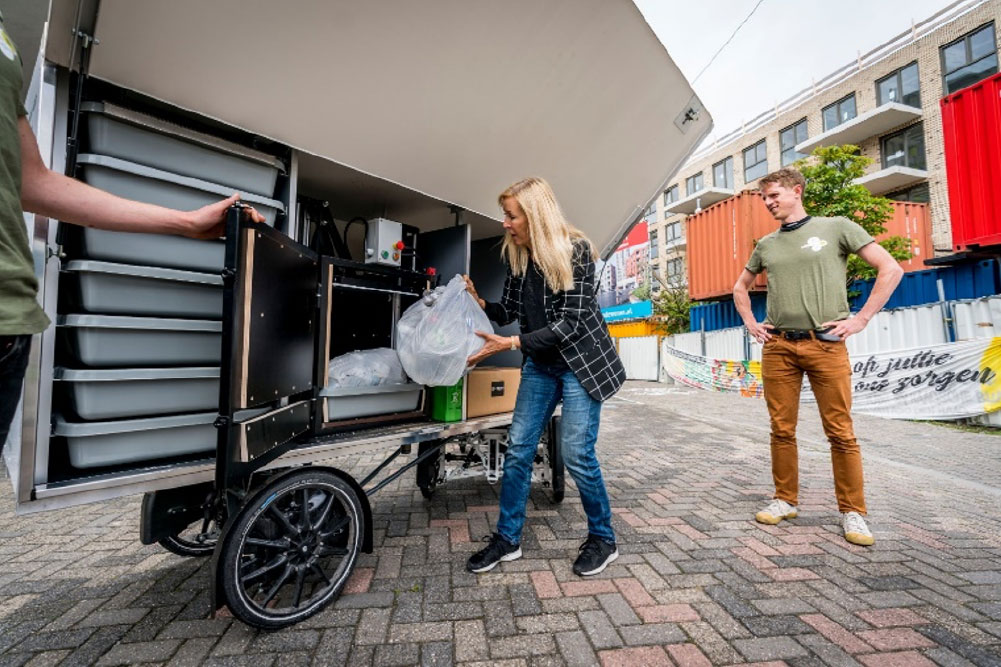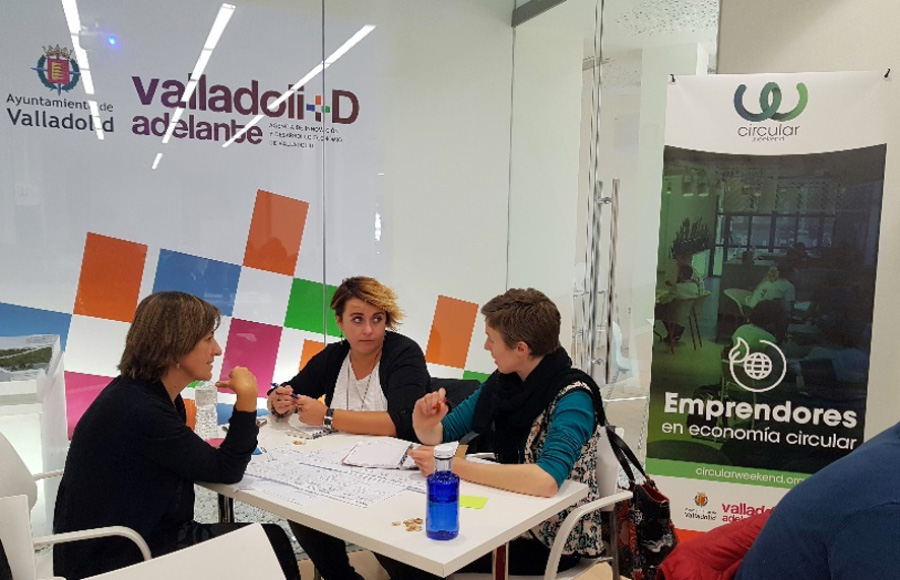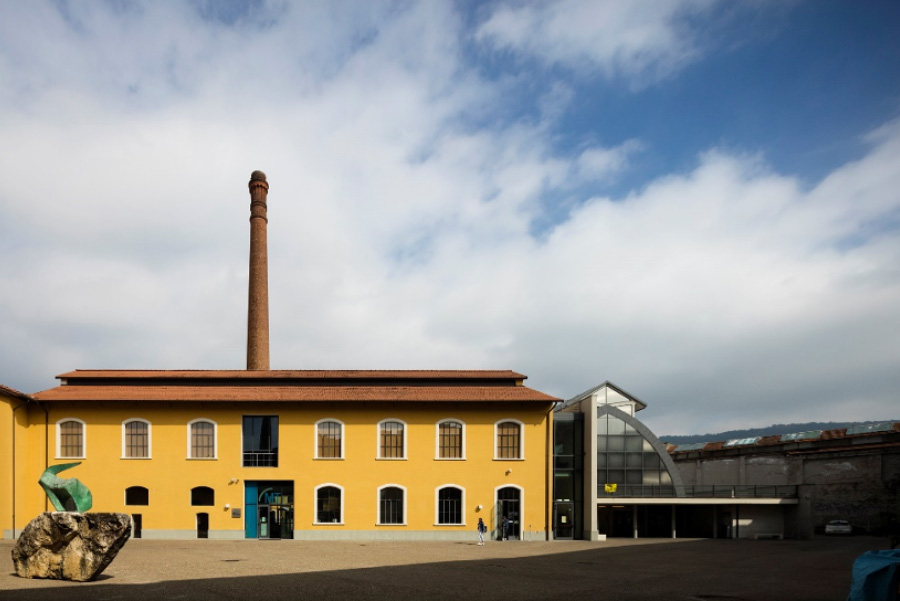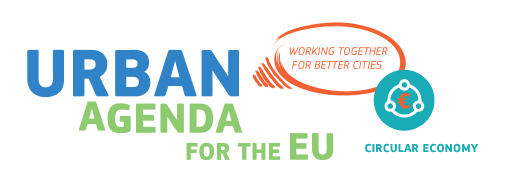Consumer goods
What are the benefits of a circular consumer goods sector?
The consumer goods sector is diverse with both short and long(er) life cycle products. In general, however, consumer goods are characterised by a linear take-make-dispose life cycle. Products are bought and disposed of by consumers without much consideration. The recycled share of material input is still limited. A growing consumption increases the sector’s demand for raw materials even further, resulting in the depletion of scarce resources1.
A circular consumer goods sector decouples the value of consumer goods from their material use. While production facilities for consumer goods may be located beyond city boundaries, cities can still play an important role in making the sector more circular. After all, with 75-85% of the global GDP generated in cities, where a majority of the total population1,5 live, consumer goods are predominantly used in urban areas. Furthermore, urban inhabitants tend to use the internet more frequently and spend more time online than rural inhabitants6. These internet habits make urban areas the ideal ecosystems to raise awareness about the need for more sustainable consumption and implement and integrate online service- and sharing-based platforms.
What will a circular consumer goods sector look like?
A distinction can be made between consumer goods with a short life cycle, often referred to as Fast-Moving Consumer Goods (FMCG), and consumer goods with a long life cycle. There are different circular solutions for these two categories.
For short life cycle consumer goods, like disposable cups, paper, and packaging, a more circular system requires mainly1-4:
- Reduction of unnecessary consumption and related production and material use
- Switch from single-use to reusable packaging and products
- Switch from low-quality short life products to higher quality longer life products
- Reduction of unnecessary packaging
- Sustainable design and production for reuse and recycling, using bio-based and secondary materials to the extent possible
For long life cycle consumer goods, like kitchen appliances, electronics, and construction tools, a more circular system requires mainly1-4,7:
- Switch from an owner- to service-based economy
- Design and production of modular and repairable products using bio-based and secondary materials to the extent possible
- Increased use of digital technologies to bring services at scale
How can we make the consumer goods sector more circular?
Circular economy measures and strategies can be applied in the consumer goods sector on various levels from the beginning to the end of the value chain:
- Circular design models: from disposables to high-end items, sustainable, circular design is crucial for the transition to a circular economy. Hazardous and virgin raw materials can be replaced by recycled or bio-based alternatives1,4,8. The overall use of materials can be reduced by discouraging extensive packaging and stimulating light weighting. Modular design can make products or components easier to repair or reuse. An interesting example of a modular product is Fairphone
 , which allows easy repair or replacement of spare parts.
, which allows easy repair or replacement of spare parts. - Use and life extension models: service-based business models can be adopted to optimise the use phase of consumer goods. These business models include product-as-a-service, based on pay per use, and peer-to-peer sharing-platforms, based on renting and lending1-4,7. Consumer goods like household items and garden and construction tools are ideal for service-based business models. After all, about 80% of household items are used less than once a month9, while a specialised item such as a power drill is used on average only 18 minutes in its lifetime10. Repair cafes play an important role in life extension models with experts available to repair e.g. broken electronics or furniture. In urban areas were storage spaces are scarce and potential users numerous, there is a high potential for use and life extension models. Many cities have introduced “neighbourhood sheds” where locals can borrow certain appliances or repair cafes where locals can get their products repaired. One example is Pembrokeshire
 in Wales, which introduced the ‘Green Shed’ that includes a shop, repair café, and remakery for local citizens. Another example is ReTuna
in Wales, which introduced the ‘Green Shed’ that includes a shop, repair café, and remakery for local citizens. Another example is ReTuna  Mall in Sweden, where everything sold has been recycled, reused or sustainably produced. Read the case study on Retuna here.
Mall in Sweden, where everything sold has been recycled, reused or sustainably produced. Read the case study on Retuna here. - Value recovery models: consumer goods designers must take into account and facilitate reuse, re-cycling or recovery of product and materials in the after-use phase. Particularly by adapting modular and service-based models, residual value can be maintained1-4. Improved source separation and separate collection are key means for increasing value recovery. Extended Producer Responsibility (EPR) is a strong policy tool to ensure that also post-consumer products are collected and recycled in a proper way. If correctly implemented, the EPR-scheme will lead to the collection of larger quantities with better quality, making upcycling technically and economically feasible1-4,7,8. Collaboration between municipalities and EPR-schemes can increase the collection of specific waste streams like waste electrical and electronic equipment (WEEE), while reducing contamination of the residual waste fraction.
- Circular support models: the development of digital technologies can help in the transition to a circular consumer goods systems1,3. The infrastructure and tailor-made solutions required for modular and service-based models can be ensured and facilitated by digital technologies. Moreover, artificial intelligence (AI) can contribute to the optimisation of circular platform services11. Systems than can track the use of and predict the need for maintenance of appliances can be a great benefit for product-as-a-service business models. Furthermore, AI can enhance the understanding, accommodation, and management of end-users on online sharing/resale platforms3,6,11. Finally, efficient and effective recovery of re-usable and recyclable materials requires optimised infrastructure as well, which is particularly challenging in a busy and dense urban environment11.

References
-
1. Transitieteam Consumptiegoederen (2018). De Transitie naar een Circulair Consumptiegoedereneconomie.
https://www.circonl.nl/resources/uploads/2019/09/transitie-agenda-consumptiegoederen.pdf -
2. Circle Economy and Holland Circular Hotspot (2019). Circular Cities.
https://hollandcircularhotspot.nl/wp-content/uploads/2019/04/HCH-Brochure-20190410-web_DEF.pdf
-
3. Circle Economy (2018). City as a Service.
https://assets.website-files.com/5d26d80e8836af2d12ed1269/5dea7d7562f8ac85742d5af9_City-as-a-Service-Circle-Economy-2018.pdf -
4. Circle Economy (2018). The Circularity Gap Report.
https://docs.wixstatic.com/ugd/ad6e59_ba1e4d16c64f44fa94fbd8708eae8e34.pdf -
5. The World Bank (2018). “Urban Development Overview”.
https://www.worldbank.org/en/topic/urbandevelopment/overview -
6. Joe Downs (2017). Urban Logistics: Bringing Goods closer to Consumer Density.
https://www.opus-group.com/News/The-Opportunity-of-Urban-Logistics-Distribution-Evolves-for-E-Commerce -
7. Ellen MacArthur Foundation (2019). Accessing Consumer Products through Better Means.
https://www.ellenmacarthurfoundation.org/assets/downloads/4_Products_Accessing_Mar19.pdf -
8. Deutsche Umwelthilfe (2016). Cutting the Crap: How to Increase Resource Efficiency in the European Personal Care Retail Sector. Deutsche Umwelthilfe.
http://changingmarkets.org/wp-content/uploads/2016/12/Changing-Markets_Cutting-the-Crap_Drogerien_English_web.pdf -
9. Wharton, University of Pennsylvania, and Rubicon (2015). How Green is the Sharing Economy?
https://knowledge.wharton.upenn.edu/article/how-green-is-the-sharing-economy/ -
10. Nordic Council of Ministers (2017). Environmental Impacts and Potential of the Sharing Economy.
https://www.diva-portal.org/smash/get/diva2:1145502/FULLTEXT01.pdf -
11. Ellen MacArthur Foundation (2019). Artificial Intelligence and the Circular Economy.
https://www.ellenmacarthurfoundation.org/publications/artificial-intelligence-and-the-circular-economy






